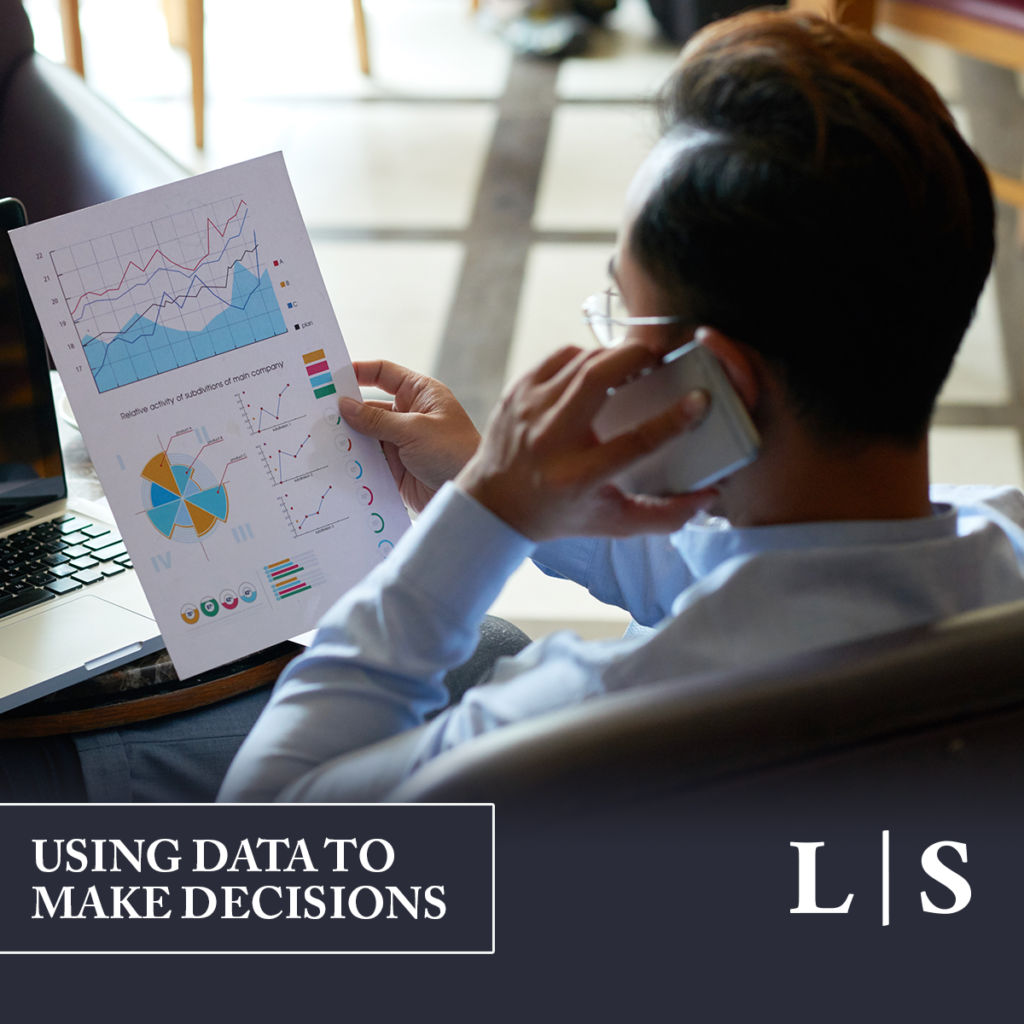Using Data To Make Decisions
Posted on September 27, 2024 by Oozle Media

I recently listened to a podcast from a sports/business performance psychologist. It was intriguing to
listen to him talk about the need to start with finding the truth before finding solutions. This concept
has been working in my mind for several days as it applies to so much of what we do as leaders of
business organizations.
As we move into the final quarter of the year, it is a great time for a business to begin considering the
truth of where they are. That truth is found by looking at the data of the business. This will become
more critical as we perform the activities needed for the preparation for next year. By harnessing the
vast amounts of data available, businesses can gain valuable insights into customer behavior, market
trends, and operational efficiency.
The Role of Data Analytics in Modern Business
Data analytics is no longer a luxury; it’s a necessity for businesses looking to stay competitive. By
leveraging data-driven insights, companies can:
Improve customer satisfaction: Understand customer preferences and behaviors to tailor
products and services.
Optimize marketing campaigns: Identify target audiences, measure campaign effectiveness, and
allocate resources efficiently.
Enhance operational efficiency: Streamline processes, reduce costs, and improve productivity.
Identify emerging trends: Stay ahead of the curve by anticipating market changes.
How CFOs Can Drive Data-Driven Decision Making
As a critical member of the leadership team, the CFO can assist leaders in making informed and
intelligent decisions. I am often reminded of an urban legend about a navy ship and lighthouse. The
basic premise is a radio conversation that started by each telling the other to move. The ship escalated
each side of its conversation by emphasizing its importance until the lighthouse finally said “This is a
lighthouse, your call.” More often than not, when a business gets in trouble, it is because it attempts to
make decisions without having the correct or sufficient data. Very rarely is it because of the lack of
intelligence, effort, or skills. Using the right data to get the correct answers is a key responsibility of the
CFO. When a CFO can foster a mindset where data is valued and used to inform strategic decisions, they
can ensure that their organization leverages the power of data to make informed choices and achieve
their objectives.
Going back to the podcast earlier, the expert said he loved to constantly ask the question, “Is that
accurate?” before moving towards any type of solution. I feel this is an awesome question to ask as we
look at the data of a business.
Examples of Data Analytics Applications in Salons
Salons can gain significant insights and improve their business operations by utilizing data analytics.
Here are several examples of how salons can leverage data to enhance their services and customer
experience:
Customer Segmentation
Identify customer preferences: Analyze customer purchase history, service ratings, and social
media interactions to identify distinct customer segments with different preferences and needs.
Tailor services: Offer personalized services and recommendations based on customer
preferences, such as specific hair products or treatment options.
Inventory Management
Optimize stock levels: Track product usage and sales data to avoid stockouts or excess
inventory.
Identify popular products: Analyze sales trends to determine which products are most in
demand and adjust inventory accordingly.
Employee Performance
Measure productivity: Track employee performance metrics, such as appointments completed
and customer satisfaction ratings.
Identify training needs: Analyze employee performance data to identify areas for improvement
and provide targeted training.
Marketing and Promotions
Target marketing campaigns: Use customer data to create targeted marketing campaigns that
resonate with specific customer segments.
Measure campaign effectiveness: Track the performance of marketing campaigns to determine
which channels and messages are most effective.
Pricing Optimization
Analyze pricing sensitivity: Evaluate how changes in pricing affect customer demand and
revenue.
Optimize pricing strategies: Adjust pricing based on demand, competition, and customer value
perception.
Customer Loyalty
Identify high-value customers: Analyze customer spending patterns and loyalty metrics to
identify high-value customers.
Offer personalized rewards: Provide tailored rewards and incentives to encourage customer
loyalty and repeat business.
Scheduling and Appointment Management
Optimize appointment scheduling: Analyze appointment data to identify peak times and
optimize scheduling to minimize wait times and maximize productivity.
Reduce no-shows: Implement strategies, such as appointment reminders or deposit
requirements, to reduce no-shows and improve appointment utilization.
As we approach the end of the year, it’s essential to take a step back and evaluate our businesses;
performance. In the spirit of the sports/business performance psychologists advice, we must start by
finding the truth before seeking solutions. This truth can be found by deep diving into our business
data.
By leveraging data analytics, we can gain valuable insights into customer behavior, market trends, and
operational efficiency. This information can help us make informed decisions, improve customer
satisfaction, optimize marketing campaigns, enhance operational efficiency, and identify emerging
trends.
Categories: Business


Leave a Reply